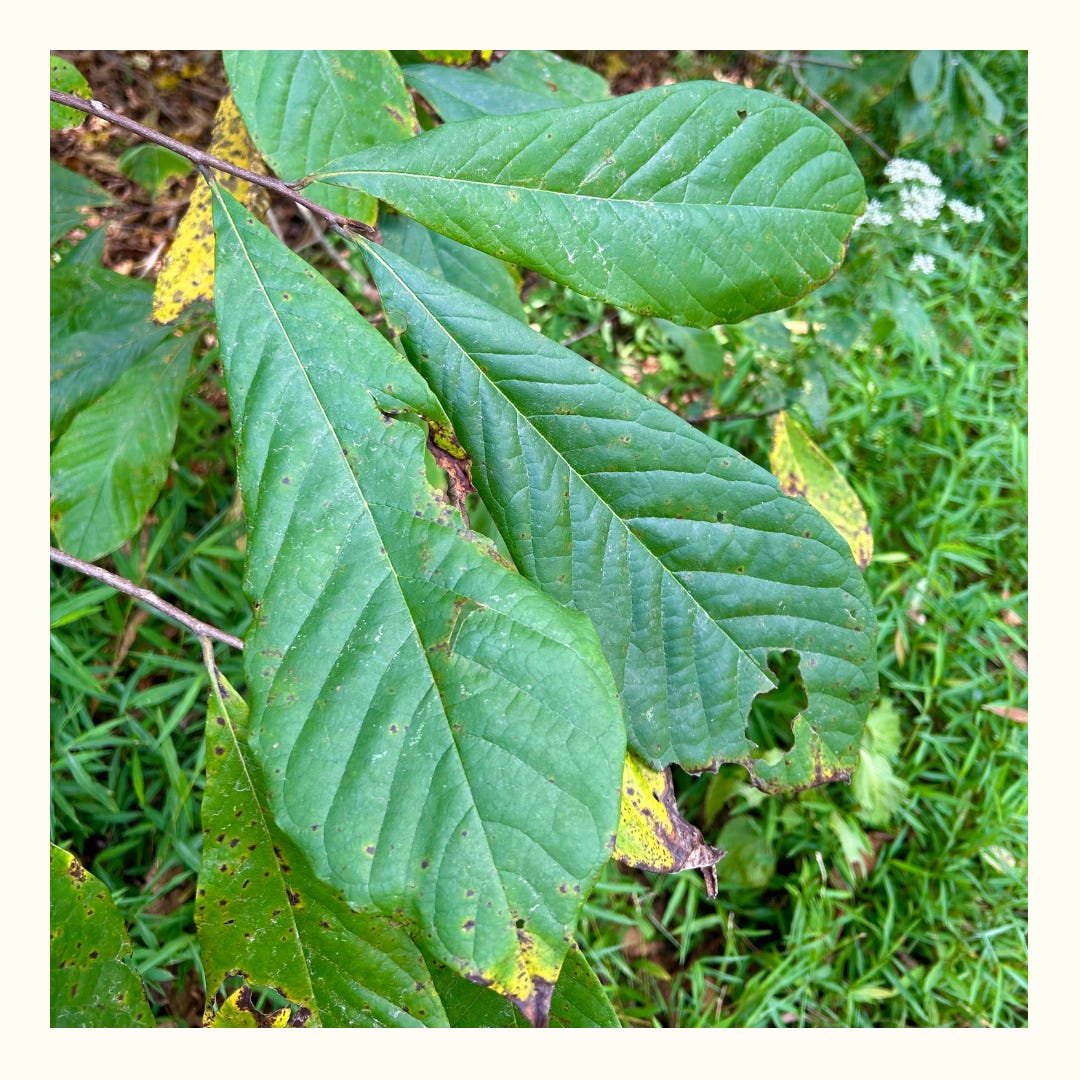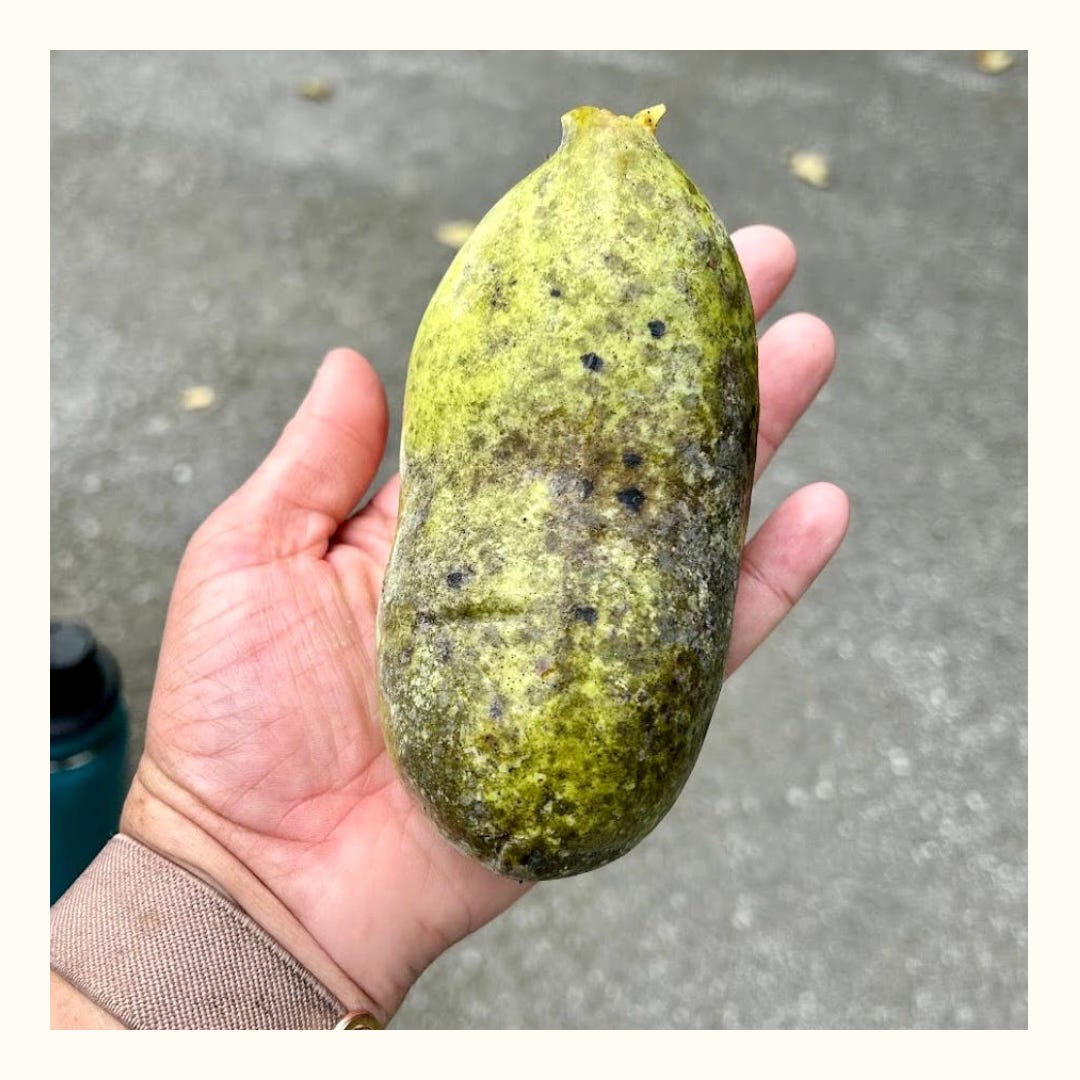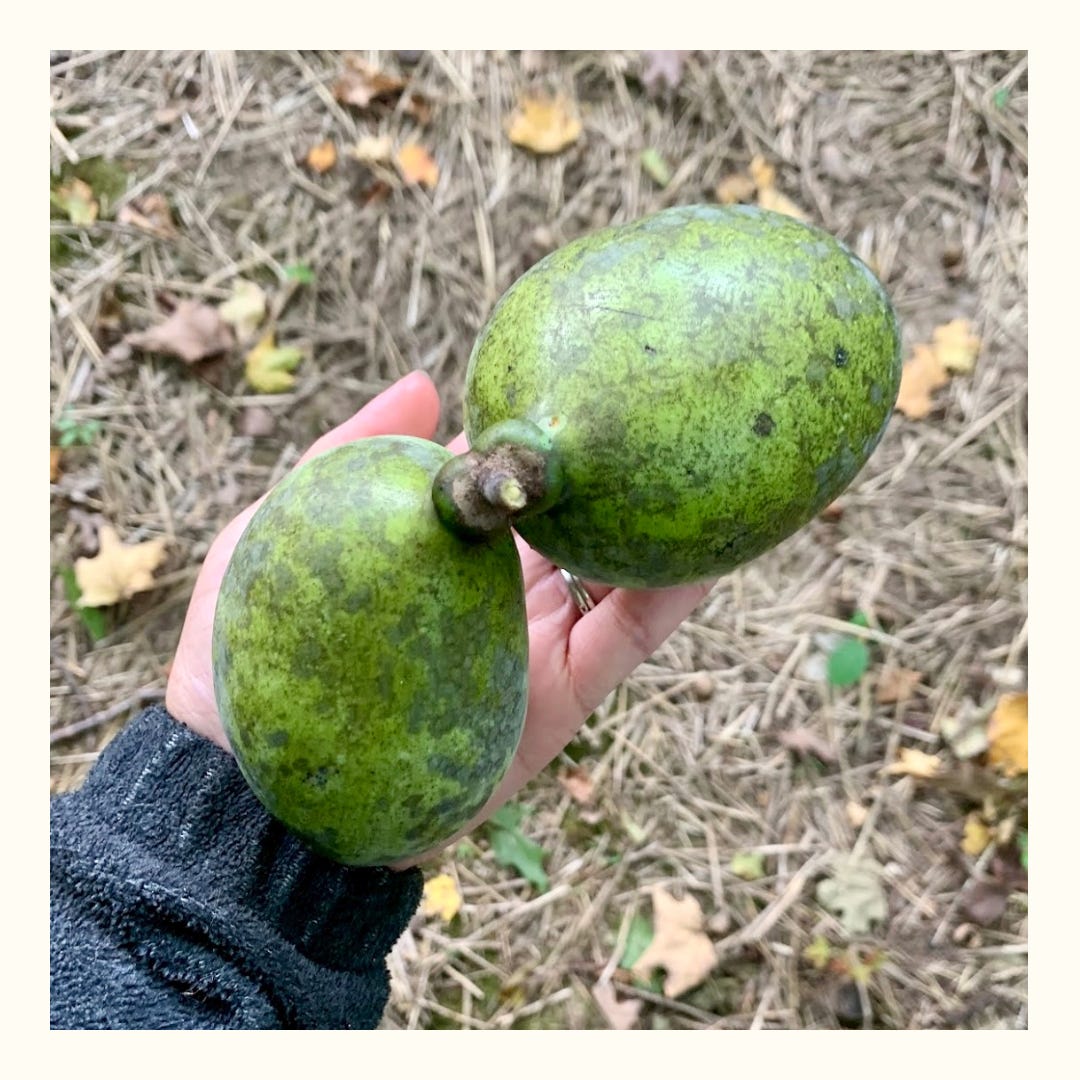Foraging Guide: Pawpaws
Here's how to locate the granddaddy of wild fruits.
All summer, Outdoor Humans features fruit you can find out in the woods. As summer turns to fall, there are fewer berries and sweet treats to find, though they’re not all gone. Enter the pawpaw: North America’s only native tropical fruit, looking something like a cross between a mango, papaya and banana. Pawpaws are somewhat mushy and packed with giant seeds, however the inside flesh is sweet. This time of year, deer, turkeys and squirrels will seek out the natural sugar rush, so you better get on it before they do.
When to hunt: Early autumn
Pawpaws begin ripening and dropping from trees in early September through October. Not all fruit on the same tree or in one area will ripen at the same time, so if you find only a few, keep returning over the next few weeks to collect more.

Where to hunt: Spots with moist soil
Where I’m at in Eastern Missouri, pawpaws are plentiful (after all, they are the state’s official fruit), though their range stretches to the East Coast, topping out into lower parts of Canada and bottoming out in parts of the Sun Belt. If you’re within this region, be on the watch for 20-30 foot trees along creek sides and river bottoms, or spots with particularly moist soil. Pawpaw trees are often found bunched together in groves and can be identified by their massive oval-shaped leaves, between 6 and 12 inches long and up to 5 inches wide. As fall progresses, they’ll transition from a deep green to yellow, and stay on the tree until nearly winter.
How to harvest: Look out, below!
Spotting pawpaws can be tricky. They often blend in with foliage while green, though they slowly ripen to a slightly yellow color and tend to have brown speckling or shading on the skin. As they ripen, pawpaws will fall to the ground, so watch where you step. Ripe fruit will be firm with a soft give when squeezed, though slightly underripe fruit can be stashed in a brown paper bag on the counter to speed up the process. Give tree trunks a gentle shake to dislodge fruit higher up (just like mulberries earlier in the year).
Foraging notes you should know
Pawpaws last only a few days at room temperature, so use them quickly or stash them in the fridge to extend their shelf life — the pulp can also be frozen after the skin and seeds are removed. There are a million ways to eat pawpaws — I’ve seen recipes for waffles, puddings and bread — however I should note not everyone finds them easy on the stomach when cooked or eaten raw. Avoid eating the skin and seeds for the best possible experience (some sources consider them toxic). As with any wild foraged food, be sure to start with small amounts before gorging yourself to avoid any unsavory reaction.




